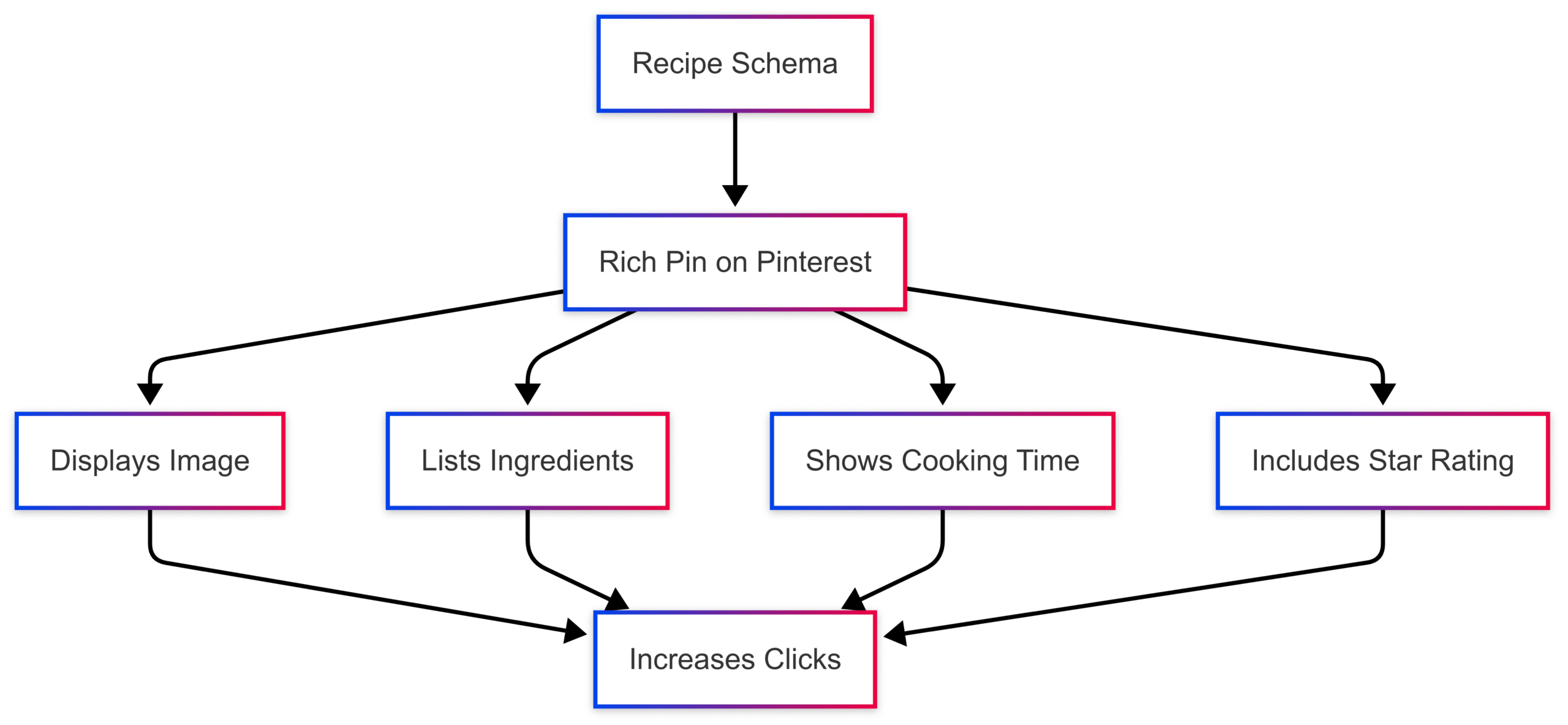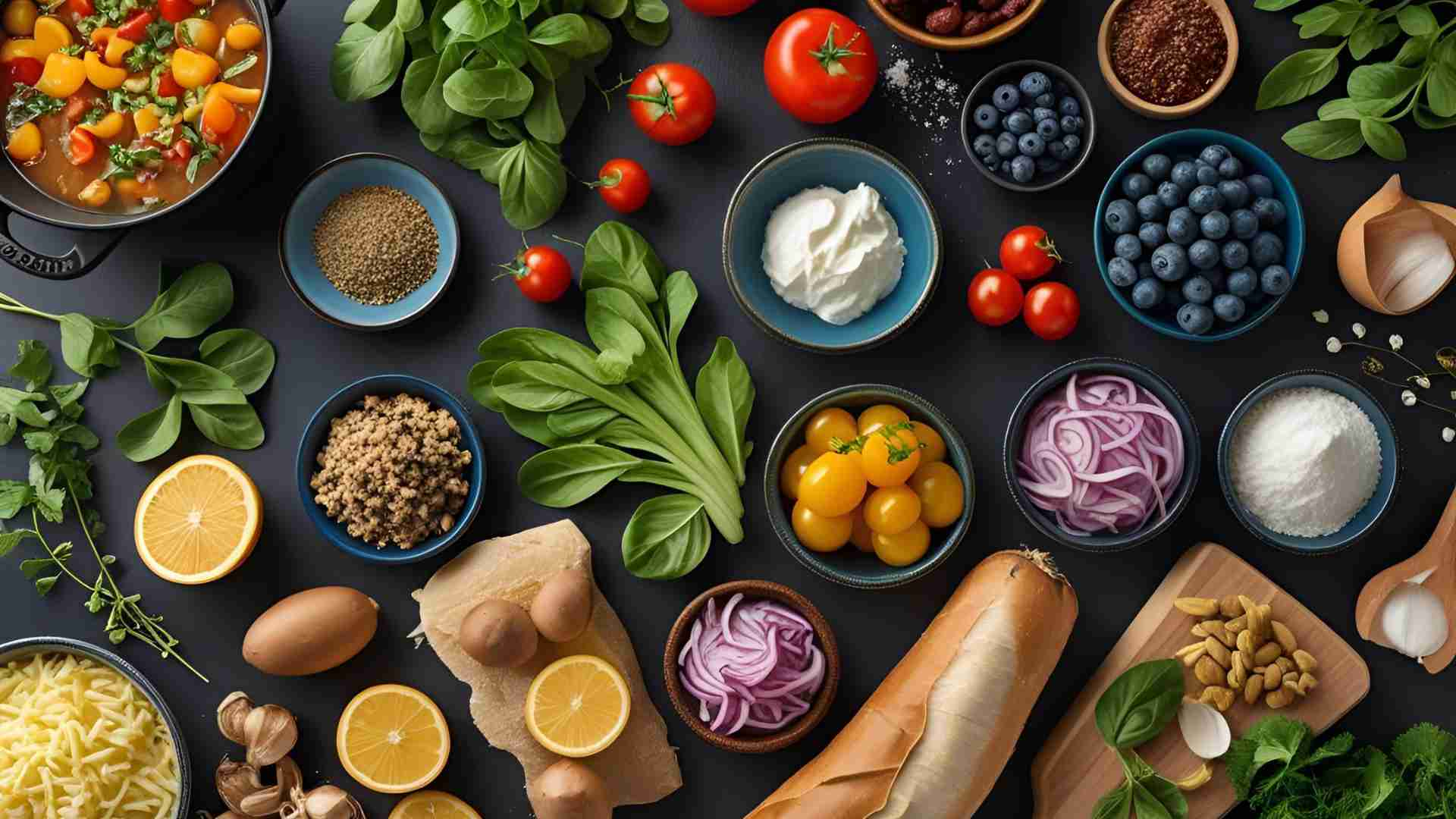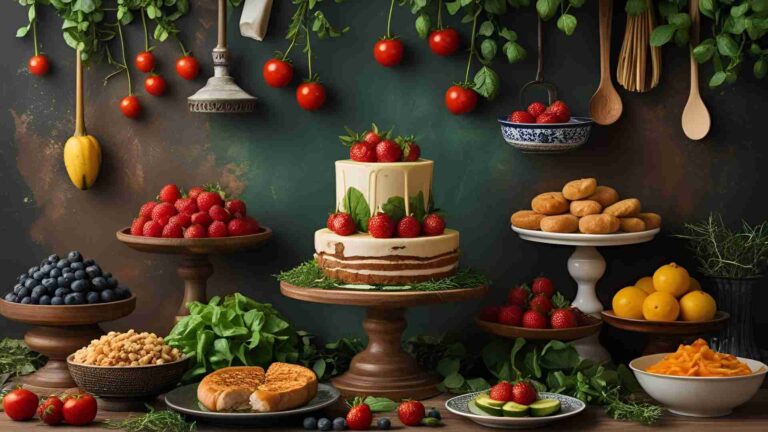What is recipe schema and how does it impact my food blog?
Boost your food blog with recipe schema! Learn how structured data enhances SEO, user experience, and social sharing in this comprehensive guide.
In the competitive world of food blogging, standing out in search engine results and captivating your audience is crucial. One powerful tool to achieve this is recipe schema, a type of structured data that transforms how search engines and users interact with your recipes. By implementing recipe schema, you can enhance your blog’s visibility, improve user experience, and increase engagement on platforms like Pinterest and Google. This in-depth guide explores what recipe schema is, why it matters, and how you can leverage it to elevate your food blog to new heights.
Understanding Recipe Schema: The Basics
Recipe schema is a form of structured data, specifically JSON-LD (JavaScript Object Notation for Linked Data), that provides search engines with detailed information about your recipes. Think of it as a translator that helps Google, Bing, or Pinterest understand the context of your content. For example, when you mention “chocolate” in a recipe, schema markup clarifies whether you’re referring to an ingredient or something else, like the 2008 movie Chocolate. This clarity ensures search engines display your content accurately and attractively.
Why Schema Markup Matters
Schema markup, developed by a collaboration of search engines like Google, Bing, Yahoo!, and Yandex through Schema.org, standardizes how data is presented across the internet. For food bloggers, recipe schema is a game-changer because it:
- Enhances Search Visibility: By providing structured data, your recipes are more likely to appear in rich snippets—enhanced search results featuring images, ratings, or cooking times.
- Improves Click-Through Rates (CTR): Rich snippets are visually appealing, encouraging users to click on your recipe over others.
- Boosts Functionality on Other Platforms: Platforms like Pinterest use schema to create Rich Pins, displaying additional recipe details like ingredients and prep time.
- Supports User Experience: Clear, structured data helps readers find exactly what they need, from ingredients to nutritional information.
While schema markup doesn’t directly boost your search engine rankings, it indirectly influences them by improving CTR and user engagement, which search engines like Google consider when ranking pages.
Key Components of Recipe Schema
To fully harness the power of recipe schema, you need to understand its core components. These elements ensure your recipes are both search-engine-friendly and user-friendly.
| Component | Description |
|---|---|
| Recipe Name | The title of your recipe, e.g., “Chocolate Chip Cookies.” |
| Description | A brief summary of the recipe, highlighting its key features or appeal. |
| Ingredients | A detailed list of ingredients, including quantities. |
| Instructions | Step-by-step cooking instructions, ideally in a numbered format. |
| Prep Time | The time required to prepare ingredients before cooking. |
| Cook Time | The actual cooking or baking time. |
| Total Time | The sum of prep and cook time. |
| Servings | The number of servings or yield (e.g., “Serves 4”). |
| Nutritional Info | Optional data like calories, fat, or protein per serving. |
| Aggregate Rating | User ratings or reviews, displayed as stars in search results. |
| Image | A high-quality image of the finished dish to attract clicks. |
These components make your recipes more accessible to search engines and visually appealing to users. For example, including an aggregateRating can display star ratings in search results, making your recipe stand out.
How Recipe Schema Enhances Search Engine Visibility
Search engines aim to deliver the most relevant and helpful results to users. Recipe schema helps them achieve this by providing structured, machine-readable data. When you implement recipe schema, your content is more likely to appear in rich snippets, which are enhanced search results that include images, ratings, or key details like prep time.
For instance, a search for “chocolate chip cookies” might display a rich snippet with your recipe’s image, a 4.8-star rating, and a 30-minute prep time. This visual appeal increases the likelihood of users clicking on your link, boosting your CTR. Higher CTR signals to Google that your content matches user intent, which can improve your ranking over time.
Here’s a simplified example of recipe schema in JSON-LD format:
{
"@context": "https://schema.org",
"@type": "Recipe",
"name": "Chocolate Chip Cookies",
"image": "https://yourblog.com/images/cookies.jpg",
"description": "Soft and chewy chocolate chip cookies made with simple ingredients.",
"recipeIngredient": [
"2 cups all-purpose flour",
"1 cup chocolate chips",
"1/2 cup butter"
],
"prepTime": "PT15M",
"cookTime": "PT12M",
"totalTime": "PT27M",
"recipeYield": "24 cookies",
"aggregateRating": {
"@type": "AggregateRating",
"ratingValue": "4.8",
"reviewCount": "120"
}
}This code tells search engines exactly what your recipe is about, increasing the chances of a rich snippet.
Improving User Experience with Detailed Recipe Information
Beyond SEO, recipe schema enhances the user experience by providing comprehensive, easy-to-follow information. When readers visit your blog, they want more than just a list of ingredients—they need clear instructions, prep times, and serving sizes to feel confident in the kitchen.
For example, a well-structured recipe might include:
- Prep Time: 15 minutes
- Cook Time: 12 minutes
- Servings: 24 cookies
- Nutritional Info: 150 calories per cookie
- Tips: “For extra chewiness, chill the dough for 30 minutes before baking.”
These details reduce uncertainty, inspire creativity, and build trust with your audience. By making your recipes easy to follow, you turn casual visitors into loyal readers who return for more.
Leveraging Recipe Schema for Social Media Engagement
Social media platforms like Pinterest and Facebook thrive on visually appealing, shareable content. Recipe schema makes your recipes stand out by enabling Rich Pins on Pinterest or enhanced previews on other platforms. A Rich Pin might display your recipe’s image, ingredients, and cooking time directly on the pin, making it more engaging.
For example, a Pinterest Rich Pin for your “Chocolate Chip Cookies” might look like this:

By including key schema tags like name, image, and recipeIngredient, you ensure your recipes are visually appealing and informative when shared, driving more traffic back to your blog.
Increasing Organic Traffic with Enhanced Recipe Features
Recipe schema directly contributes to organic traffic by improving how your content appears in search results. Rich snippets attract more clicks, and the detailed information provided by schema keeps users on your site longer, reducing bounce rates. Both factors signal to search engines that your content is valuable, which can improve your rankings over time.
To illustrate the impact, consider this hypothetical data comparing two food blogs:
| Metric | Blog with Schema | Blog without Schema |
|---|---|---|
| Rich Snippet Appearance | 80% of recipes | 10% of recipes |
| Click-Through Rate | 5.2% | 2.8% |
| Average Time on Page | 3:45 minutes | 2:10 minutes |
| Monthly Organic Visits | 25,000 | 15,000 |
By implementing schema, Blog A sees a higher CTR and more engaged visitors, leading to a significant boost in organic traffic.
Best Practices for Implementing Recipe Schema
Implementing recipe schema doesn’t require coding expertise, thanks to user-friendly plugins. Here’s how to get started:
-
Choose a Reliable Plugin:
- Tasty Recipes: A lightweight, premium plugin designed for food bloggers, offering JSON-LD schema and customizable recipe cards. Price: $49/year for a single site (as per their official site).
- WP Recipe Maker: A robust option with free and premium versions, supporting JSON-LD and rich snippet optimization. Price: Free; Premium starts at $49/year.
- RecipePress Reloaded: A free WordPress plugin with schema support, ideal for budget-conscious bloggers.
-
Include Essential Schema Fields:
Ensure your recipes includename,image,recipeIngredient,prepTime,cookTime,recipeYield, andaggregateRatingfor maximum impact. -
Test Your Schema:
Use Google’s Rich Results Test to verify that your schema is correctly implemented and eligible for rich snippets. -
Update Regularly:
Stay aligned with Schema.org and Google’s guidelines, as standards evolve. Check your schema annually or after major plugin updates. -
Balance Optimization and Readability:
While schema improves SEO, ensure your recipes remain engaging and easy to read for human visitors.
For Squarespace users, schema implementation is trickier since the platform lacks native recipe schema support. Consider switching to WordPress for better plugin compatibility, or explore third-party tools like RecipesGenerator.com, though their generic layouts may not suit all blogs.
Addressing Common Concerns
Does Google Recognize Recipes Without Schema?
Google can sometimes identify recipes without schema, especially if your content is well-structured with clear headings and lists. However, without schema, you miss out on rich snippets, which significantly reduce your visibility. A user on Reddit noted that testing a recipe page with Google’s Rich Results Test can confirm whether Google detects your recipe data.
Is Schema Markup Essential for Rankings?
While schema doesn’t directly impact rankings, it boosts CTR and user engagement, which indirectly influence SEO. A Reddit commenter emphasized that for food blogs aiming to earn a living, schema is “absolutely essential” due to its role in rich snippets and user trust.
What About Star Ratings?
Star ratings, enabled through the aggregateRating schema tag, are highly valued by Google. They make your recipes more appealing in search results, as users trust highly rated content. If your platform (e.g., Squarespace) doesn’t support ratings, consider a plugin or a WordPress migration.
Conclusion
Recipe schema is a powerful tool for food bloggers looking to boost their blog’s visibility, engagement, and user experience. By providing structured data, you make your recipes more accessible to search engines, resulting in eye-catching rich snippets that drive clicks. Schema also enhances social media sharing, fosters trust with detailed recipe information, and increases organic traffic by keeping users engaged.
To get started, choose a reliable plugin like Tasty Recipes or WP Recipe Maker, ensure all key schema fields are included, and regularly test your markup. Whether you’re on WordPress or exploring options for Squarespace, embracing recipe schema is a step toward standing out in the crowded food blogging landscape. By combining technical optimization with high-quality, user-friendly content, you’ll attract more visitors and build a loyal audience eager to try your recipes.
Please share these What is recipe schema and how does it impact my food blog? with your friends and do a comment below about your feedback.
We will meet you on next article.
Until you can read, Pork Belly Bao Buns with Pickled Veggies Street Food







This is a topic that’s near to my heart… Best wishes!